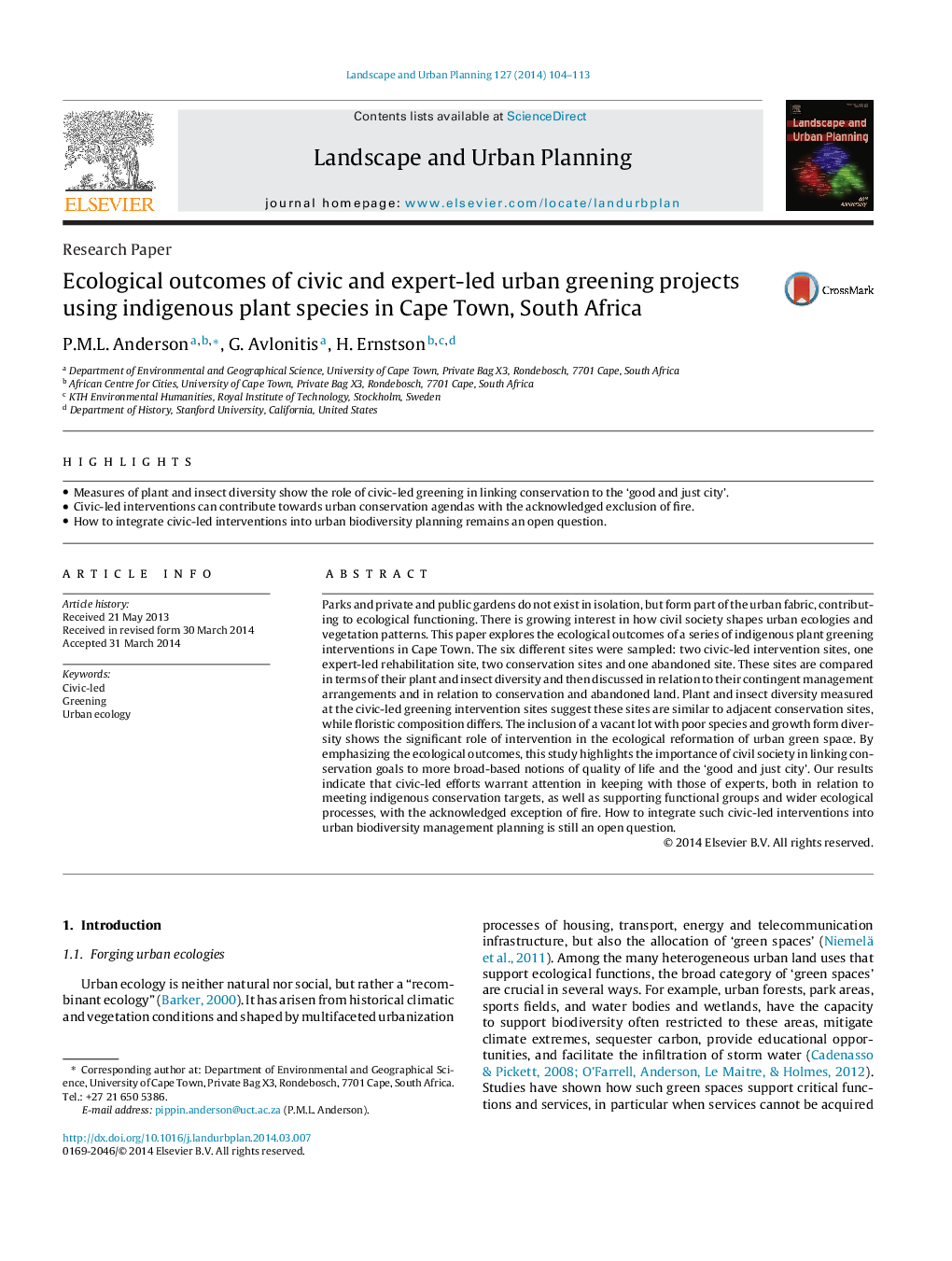| Article ID | Journal | Published Year | Pages | File Type |
|---|---|---|---|---|
| 7461451 | Landscape and Urban Planning | 2014 | 10 Pages |
Abstract
Parks and private and public gardens do not exist in isolation, but form part of the urban fabric, contributing to ecological functioning. There is growing interest in how civil society shapes urban ecologies and vegetation patterns. This paper explores the ecological outcomes of a series of indigenous plant greening interventions in Cape Town. The six different sites were sampled: two civic-led intervention sites, one expert-led rehabilitation site, two conservation sites and one abandoned site. These sites are compared in terms of their plant and insect diversity and then discussed in relation to their contingent management arrangements and in relation to conservation and abandoned land. Plant and insect diversity measured at the civic-led greening intervention sites suggest these sites are similar to adjacent conservation sites, while floristic composition differs. The inclusion of a vacant lot with poor species and growth form diversity shows the significant role of intervention in the ecological reformation of urban green space. By emphasizing the ecological outcomes, this study highlights the importance of civil society in linking conservation goals to more broad-based notions of quality of life and the 'good and just city'. Our results indicate that civic-led efforts warrant attention in keeping with those of experts, both in relation to meeting indigenous conservation targets, as well as supporting functional groups and wider ecological processes, with the acknowledged exception of fire. How to integrate such civic-led interventions into urban biodiversity management planning is still an open question.
Keywords
Related Topics
Life Sciences
Agricultural and Biological Sciences
Ecology, Evolution, Behavior and Systematics
Authors
P.M.L. Anderson, G. Avlonitis, H. Ernstson,
